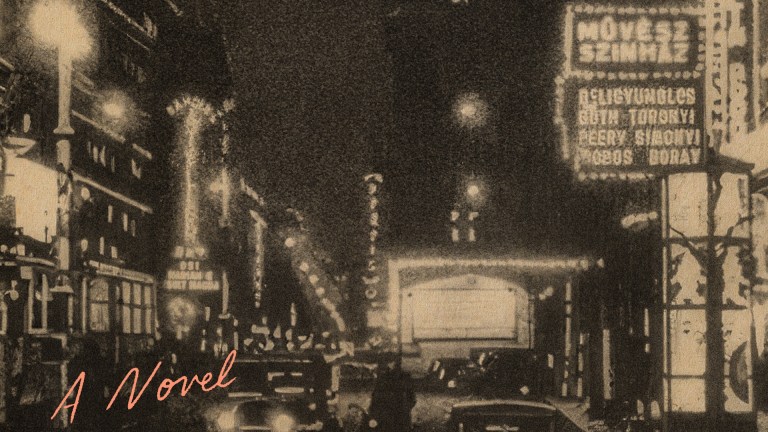Thomas Pynchon Retains the Cartoon Zaniness of Inherent Vice In Shadow Ticket
Thomas Pynchon returns with Shadow Ticket - a fantastical, accessible detective novel that's worth the wait.

It’s been 12 long years since Thomas Pynchon released his eighth novel Bleeding Edge, and rumors have only continued to swirl about the famously elusive author. Like the hushed whispers surrounding Tarantino’s tenth and final film or George R.R. Martin’s increasingly unlikely A Song of Ice and Fire conclusion, most readers could only spend the past decade speculating about the iconic writer’s projects, with many justifiably believing Pynchon’s 2013 novel to be his last.
But as was the case with the lengthy dry spell between 1973’s award-winning Gravity’s Rainbow and 1990’s less-than-well-received Vineland, fans have kept themselves busy wondering about the long-awaited novel Pynchon might be cooking up. Just as readers seemed ready to give up hope they’d ever see one last hurrah from the 88-year-old Mason & Dixon author, the literary world erupted with joy at the news that Pynch had one more novel left in him: the characteristically humorous postmodern neo-noir story, Shadow Ticket.
Like many of Pynchon’s latter day works, Shadow Ticket acts as yet another zany take on the hard-boiled detective narrative. Channeling the same comedic energy as Inherent Vice and Bleeding Edge and tossing in a little bit of The Crying of Lot 49 for good measure, Pynchon’s latest novel takes readers on a spellbinding journey into the heart of Great Depression-era America and beyond.
For some, it might be a chaotic, plotless story filled with gangsters, cheese heiresses, and enough spies and counterspies to fill the entirety of the James Bond canon. But for most others, Shadow Ticket is the ultimate ode to Pynchon’s larger body of work – a nostalgic tip of the hat for all those readers who have stuck by the author’s side since V.’s publication in 1963. And in many ways, that’s achievement enough for a novelist of Pynchon’s undeniably immense caliber.
Hard Luck and Hard-Boiled in the Jazz Age
The year is 1932. Gangland Chicago is on its last legs, the king of organized crime, Al Capone, officially locked behind federal bars. In this post-Jazz Age Midwest, millions of blue-collar workers are busy fending for themselves amidst the hardships of the Great Depression and the rigorous crackdown on Prohibition.
Into this fray enters Hicks McTaggart, a former union strikebreaker turned down-on-his-luck private eye. Taking on a case for his employers at the Unamalgamated Ops detective agency in Milwaukee, Hicks reluctantly agrees to chase down Daphne Airmont, a one-time flame who’s slated to become the millionaire heiress to the so-called “Al Capone of Cheese,” Bruno Airmont, who’s long since made a name for himself as the leader of an underground dairy empire known as the Cheese Outfit.
Embarking on a series of misadventures, misunderstandings, and more than a few misapprehensions, Hicks finds himself crossing halfway across the globe in search of the eccentric Daphne, departing for the similarly chaotic cities of Eastern Europe hot on the socialite’s trail. There Hicks becomes entangled with various oddball characters all struggling to make sense of the Interwar chaos sweeping the land, all the while the horrors of World War II loom not-so-subtly in the distance.
To make it out of this perilous case alive, Hicks will have to use every trick in the official Gumshoe Manual to survive, outrunning ruthless Chicago gangsters, corrupt Interpol agents, bickering British spies, illusionists, motorcyclists, contract killers, and shady government officials to return to the Friday fish fries and bowling tournaments he longs for back home.
The Big Cheese Back At It Again
In the grand scheme of things, Pynchon’s work tends to fall neatly into two categories. There’s the breathless epics he remains most well-known for (V., Gravity’s Rainbow, Mason & Dixon); and then there’s the lighter genre pieces that are more accessible to general readers (Lot 49, Vineland, Inherent Vice, Bleeding Edge).
Shadow Ticket most assuredly falls into the latter category, serving as the same humorous subversion of the detective novel as Inherent Vice and Bleeding Edge before it. In many ways, one can almost describe ST as the ideal companion piece to both of the writer’s earlier works, forming something of a stylistic neo-noir trilogy.
Swapping out an overreliance on homegrown pot in Inherent Vice for Old Fashioneds and towering German lagers in Shadow Ticket, Pynchon once again achieves the same headier tone he’s become known for over the past six decades. The author’s unparalleled wit and vivid sense of imagination is back and stronger than ever, chugging along like an autogyro slashing through the clouds. (A scene that, ironically, forms a pivotal moment in Shadow Ticket’s climactic final chapters.)
For those wondering whether Pynchon might have lost his touch between novels, rest assured that Shadow Ticket is the same author we’ve grown to know and love since Benny Profane first chased after albino alligators in New York’s sewer system in V. Once again, Pynchon’s propensity for unforgettable characterization is present in Shadow Ticket, as evidenced by such vibrantly-drawn names as Hop Wingdale, Swampscott Vobe, Zoltan von Kiss, and the utterly adorable Shirley Temple spoof, Squeezita Thickly.
Not only that, but the array of colorful situations the characters find themselves similarly echo Pynchon’s best, most absurdist work. After all, what other writer could so convincingly present bizarre scenes as everyday occurrences, from mothers running off with circus elephant trainers to fugitive World War One submarines hurling beneath the ice of Lake Michigan? While most of these ideas and concepts might seem straight out of a Monty Python or early SNL sketch, they’re just a matter of recourse for good old Mr. P – and for that reason, Shadow Ticket’s deserves all of our love and attention.
A Final Adieu From the Peerless Mr. Pynchon?
But it’s not all fun and games in Pynchon’s latest venture either. As with all of the maestro’s previous work, there’s a prevalent danger underneath the surface of Shadow Ticket: a foreboding sense of dread that haunts every page. Characterized by a kind of grim gallows humor, characters are fully aware of the shift in the air of both America and Europe, from the emerging threat of fascist government groups to the obvious war building between the rival world powers.
Interestingly, in spite of its historical settings, one can almost see Shadow Ticket as a sort of bold Pynchonian statement of the times today. Afterall, it’s hard not to see parallels between the events of Pynchon’s story and the problems of the modern age (joblessness, economic depression, geopolitical tensions between countries, the surge in authoritarian leaders sprouting up all over the globe, etc.). While that might be misreading things a bit, it’s no secret that Pynchon has often used his period settings to touch upon ongoing problems of the day, be it the uncertainty and political anxiety of post-9/11 America in Bleeding Edge or the Nixonian abuse of government power and surveillance in Gravity’s Rainbow.
With its lean length and somewhat meandering story, Shadow Ticket admittedly might not pack the same wallop of a punch as the author’s earlier work. And like Vineland, Inherent Vice, or Bleeding Edge, it’s unlikely to attract the same level of critical attention from fans and readers as his far more well-known 20th century novels. But for fans looking for one playful story from the fabled author, Shadow Ticket appears as a welcome sendoff to a man who made his career off surreal jokes, ridiculous character names, and hopelessly outrageous narratives. And at the end of the day, that’s all we could ever want from Mr. Thomas Pynchon.
Shadow Ticket is available for purchase now.
